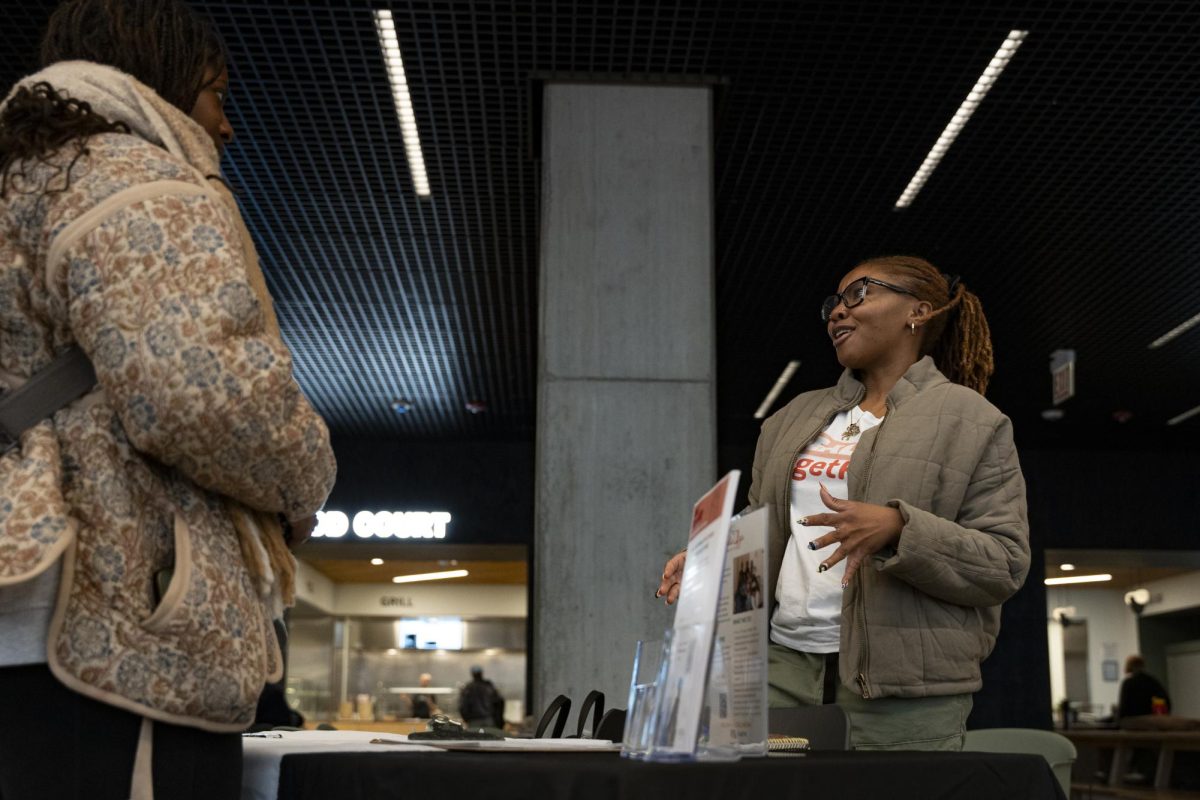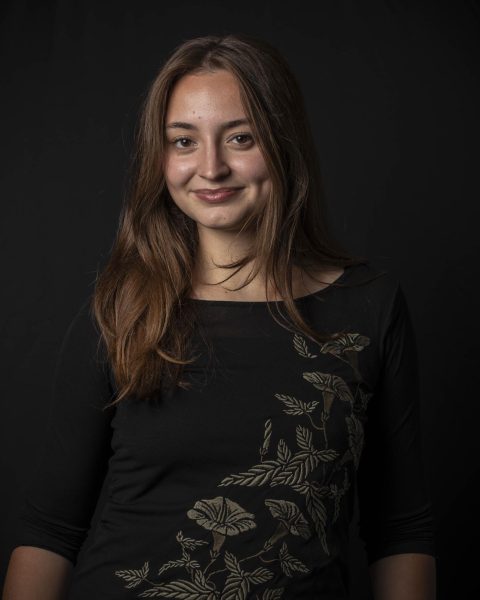Faculty have been working under a fast and tight deadline for weeks to deliver on a mandate to review all of the undergraduate majors at the college and to cut costly or programs with low enrollment.
The College-Wide Curriculum Committee met twice last week and has now completed its review of faculty recommendations for the college’s 58 majors. The recommendations will now be sent to the Faculty Senate Academic Affairs Committee and then to the provost. The Board of Trustees will have the final say on any changes.
The faculty working groups followed some, but not all, of Senior Vice President and Provost Marcella David’s initial recommendations. For example, she recommended that the creative writing major be eliminated, but faculty in the School of Communication and Culture have proposed to keep it as one of two majors in the school.
The school’s other proposed major is journalism and communication, each with its own concentration. However, the English, cultural studies and radio majors were proposed to be cut under faculty recommendations reviewed by the College-Wide Curriculum Committee and obtained by the Chronicle. The Chronicle is only reporting on degree changes it was able to confirm by publication time.
Current students whose majors are proposed to be cut or merged will still be able to graduate with their degrees.
Faculty also agreed with David’s recommendation to eliminate the ASL-English Interpretation major under the initial recommendations. It could become a minor.
“We hope to offer a sustainable, cost-effective, and exciting array of courses and programs that have clear paths to graduation, with some room for exploration along the way, and that lead to job opportunities for our students, and ultimately, successful careers,” said Robin Whatley, administrative chair of the College-Wide Curriculum Committee and associate professor in the School of Design.
The faculty working groups agreed with David and proposed to eliminate the art history and environmental studies majors.
The photography bachelor’s degree would no longer be offered under a preliminary proposal, but the BFA program would continue, and the photojournalism major would become a minor.
Similarly, the illustration bachelor’s degree would potentially go away, but the BFA would remain under the suggestions of the faculty working groups.
At a town hall in September, David told faculty that the ASL-English interpretation, dance and art history programs lose $10,001 to $20,001 annually per student because the instructional costs exceed what students pay in tuition, stating that the decisions were “cost-driven.”
The changes being considered right now would go into effect in Fall 2025 for new students, who also would see a 10% tuition increase, as the Chronicle previously reported this week.
The Chronicle reviewed the recommendations brought to the College-Wide Curriculum Committee and compared them with a list of existing majors to get an idea of the scope of change being made. Whatley cautioned that the list was not “final.”
The faculty working group proposals include the elimination of some majors, as expected, but also the creation of others. Some majors would become concentrations, and others could become minors.
Following David’s recommendation, the School of Business and Entrepreneurship has proposed to have a marketing major with four concentrations that would replace the advertising, public relations and social media and digital strategy majors. Fashion marketing would be the other concentration under the current proposal.
A new animation and computer graphics major would have four concentrations under initial recommendations from faculty.
The film and television major would have three concentrations: writing and producing; production and editing and post-sound.
The film and television BFA would have two concentrations: directing and cinematography. A BFA is a more specialized degree focused on creative practice in a specific art field.
A new game and interactive media design major would have four concentrations: game design, game programing, software design and UX/UI.
“The plan for the bulk of the changes in the School of Design is re-aligning connected programs into single structures with shared cores,” said Tom Dowd, interim director of the School of Design. “We’re simplifying the structures as well which will make it easier for students to slide between them if they want to shift focus.”
Faculty also proposed a Visual Arts BA and a Fine Arts BFA.
Duncan Mackenzie, interim chair of the School of Visual Arts, said the logic in the restructuring comes from the recent reduction of core credits from 42 to 30. The BFA credits also were reduced from 128 to 120 credit hours.
“What we’ve known for years and years is, no matter what degree our students take, they take a ton of their elective credits and other classes within their major anyway,” Mackenzie said. “What we’ve tried to do in this array is codify that and make that easier to plan for the department and easier to outlay and make sure that students get what they need to graduate, get the skills they need to professionalize within their discipline.”
The School of Fashion proposed no big changes to its curriculum.
Colbey Reid, chair of the School of Fashion, told the Chronicle that the school has approved a new beauty management program with two certificates in diversity and beauty management and sustainable beauty management.
Whatley said that when reviewing programs, the committee was looking for “areas of redundancy or overlap in curriculum.”
Michael Caplan, president of the college’s AAUP advocacy chapter, has raised concerns about the accelerated timeline and workload placed on faculty to make the revisions.
“In my 25 years at the college, I have not encountered such an unprecedented demand,” Caplan wrote to chapter members in late October. “The breadth and schedule of the directive is extremely unusual for any institution of higher learning.”
Caplan, an associate professor in the School of Film and Television, said in the email that the curriculum is being redesigned to fit within newly created schools, which were formed with “almost nonexistent faculty input.”
In a follow up interview with the Chronicle, Caplan said, “I do think that we as a college community should look carefully at cutting the majors that make Columbia a special place to teach, work and study.”
The college will hold its last faculty town hall meeting on Thursday, Nov. 14 before sending the recommendations to the Faculty Senate committee. David will receive the full set of program recommendations in December and then present her final decision to faculty and staff by late December or early 2025 under Tarrer’s timeline.
“The edict from administration to revise the entire college curriculum in less than 12 months did not provide faculty a reasonable time frame in which to properly design curriculum,” said Joan Giroux, professor in the School of Visual Arts.
Giroux said that she is concerned that changes proposed to occur by next fall will cause “significant confusion for continuing students and impact our ability to advise students.”
“Additionally, the time and energy required to implement these changes continues to erode any faith that shared governance and faculty purview over curriculum is anything but performative,” Giroux said.
Copy edited by Manuel Nocera










